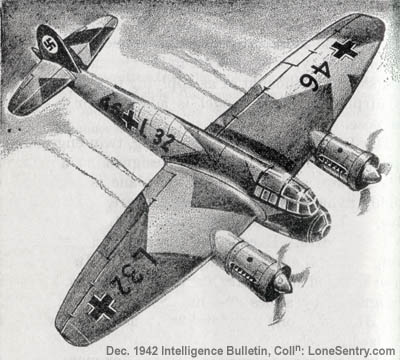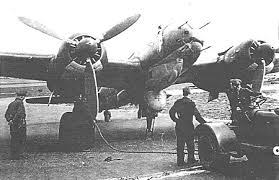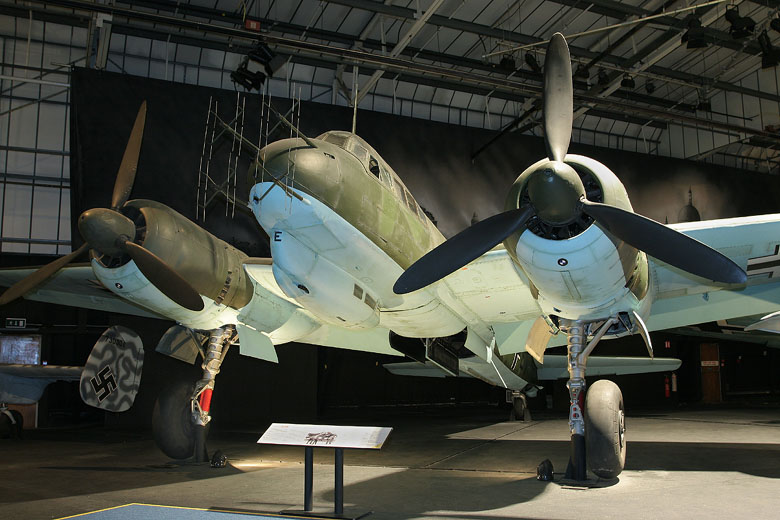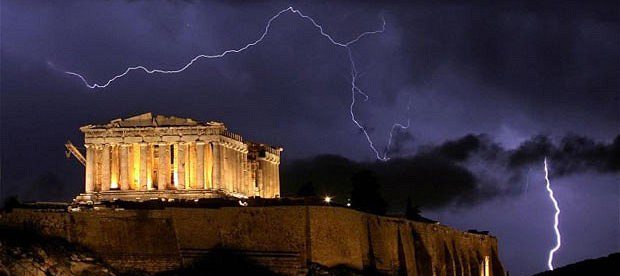Magnetrons & Radar

In the 1920s, a General Electric Employee, Albert Hull, was researching Vacuum Tubes when he created the Magnetron. However, Hull could think of very few uses for his invention, and the magnetron remained largely unused for another 10 years.
Above prototype Magnetron designed by J Randall & H Boot in February of 1940
Two Engineers from the University in Birmingham, John Turton Randall & Henry Albert Howard Boot built a small but powerful Radar using a Multicavity-Magnetron. The B-17 Aeroplanes were fitted with this Radar. Now they could Find and thus Combat the German Submarines at Night & in Fog.
In the late 1930s & early 1940s, 2 Engineers named Harry Boot & John Randall decided to explore the Magnetron further. Instead of using glass to create the outer casing of the Magnetron, they used heat resistant Copper to create a Magnetron capable of incredible Microwave Output. Their creation allowed for an Output of 400 watts in a space smaller than 4-ins (10cm). As Boot & Randall developed stronger Magnetron Tubes, they discovered the Tubes were ideal for Radar (Radio Detection & Ranging). During WW2, United States submarines began utilising these Tubes, which allowed the Radar Equipment to help them detect Enemy Ships more quickly. In the late 1940s, Dr Percy Spenser, who worked for Raytheon Corporation, further tested the Output of Magnetron Tubes in his Laboratory. He noted that the candy bar in his pocket had completely melted while working with the Tubes. He decided to place a few kernels of Popcorn near the Machinery to see what would happen and noticed it made the Kernels Pop.
Radar Tutorial – The term RADAR was coined in 1940 by the United States Navy as an acronym for RAdio Detection And Ranging.
In June of 1940, Eric Stanley Megaw, based on Experiments with General Electric Company E821 Glass Magnetron, had designed a Cavity Magnetron in England which worked on 10-cm and became available for Aircraft Interception. This Magnetron was Air Cooled and J Randall & H Boot turned it into a Water-Cooled Unit. The Magnetron became the heart of the H2S Radar which also used a PPI CRT (Plan Position Indicator – Cathode Ray Tube) installed in British Bombers. The Cavity Magnetron had a substantial increase in performance over other Magnetrons of its time and it played a substantial role in the history of Radar. Unlike the disclosure of the German Radar Secrets, the British worked in the strictest of Confidence & Secrecy during WW2 and developed the H2S Airborne Radar which used a Magnetron and a PPI-scope. This unit worked well and could identify Targets on the ground for Night & all-weather Bombing. In February 1943, a Stirling Bomber with the H2S Radar was shot down near Rotterdam and the Radar Unit was found by the Germans. The Germans tested this Radar. They built an improved unit by June of 1943 called the LMS 10 “Berlin.”

FuG 202 Lichtenstein B/C
Early FuG 202 Lichtenstein B/C units were not deployed until 1942. They operated at a maximum RF Output Power of 1.5-kW on the 75-cm wavelength (490 MHz, or low UHF Band), requiring complex Matratze (mattress) Antennas, consisting of a total of 32-Dipole elements, mounted in 4-Groups of 8, each at the forward end of 1 of 4 forward-projecting Masts.
FuG 212 Lichtenstein C-1
During 1943 the Lichtenstein B/C was improved as the FuG 212 Lichtenstein C-1, with longer Range & wider angle of View, still Operating at UHF Frequencies between 420 & 480-MHz and using the complex Matratze Aerial Set. By this point in the War, the British had become experts on Jamming German Radars. A B/C-equipped Ju88 R-1 Night Fighter, Werknummer 360 043, defected in April 1943 and Landed at RAF-Dyce, presenting a working example of the German Radar for the 1st time, with the Aircraft itself, still in existence as of the 21stC, becoming a Museum Exhibit in the UK. The subsequent refinement of ‘Window‘ (known as Düppel by the Luftwaffe, from the German Town it was 1st Found near) rendered Lichtenstein B/C almost useless for several crucial weeks.

Interception – Junker 88 Werknummer 360043, PJ876 was reportedly flown by a Defector(s) (or an Agent of the Secret Service) from Norway to RAF Dyce, Aberdeen, on the 9th May 1943. Two (Pilot & Wireless Op/Gunner) of the 3-man Crew fully co-operated much to the consternation of the 3rd man, the Flight Engineer, who was Incarcerated as a PoW. The Pilot could have arranged this Defection with the British Secret Service which wanted to acquire information about German Night-fighter Radar Technology. The Junker Aircraft had been in Service with 10./NJG 3 in Norway and was Registered as D5+EV. Reporting a Fake Engine Fire to his German Radio Station the Pilot landed at Dyce under Spitfire (165 Squadron) Protection. It has been suggested that he had pro-British Ssympathies and whilst serving with 2/NJG2 he had Landed in the UK at Debden (14th /15th February 1941) and in Lincolnshire (20th May 1941) on clandestine Intelligence Missions connected with British Intelligence. Believing that the Plane was lost in the Sea the Germans declared it Lost. One month later they learned by a Radio Transmission from the BBC what really had happened. On the 11th May 1943, Professor R V Jones (Assistant Directorate of Scientific Intelligence and an Expert on German Radar Systems) arrived at Dyce to take charge of the evaluation of the Aircraft and its Equipment. On the 14th May, under Beaufighter Escort, PJ876 was Flown from RAF Dyce to the Royal Aircraft Establishment (RAE) at Farnborough by Sqn Ldr R A Kalpas for consequent Day & Night time Testing.


At this time RAF Bomber Losses were exceptionally high due to Night-Fighter Interceptions. Detailed analysis of 360043 brand new FuG 202 Lichtenstein Radar revealed that the German Night-Fighter was using the Signals from Monica (a 1-cm Radar Device fitted to an RAF Bomber to give early warning of an impending Night-Fighter Attack) to “Home-in” on the Bomber itself. The Germans had developed the Technology to receive centimetre Wavelength Radar Signals but not the Technology to generate them using a Magnetron which had been Invented at Birmingham University. PJ876 was also used to evaluate the impact of “Window” or Chaff (aluminium strips) on German Radar. On the 6th May 1944, PJ876 was flown to the 1426 (Enemy Aircraft) Flight Base at RAF Collyweston nicknamed “the Rafwaffe“. When 1426 was disbanded on the 21st January 1945 PJ876 being selected for preservation, along with other Aircraft, and stored. In 1976 PJ876 was restored to Luftwaffe livery and placed on Display at RAF Hendon Museum during August 1978.
FuG 220 Lichtenstein SN-2
By late 1943, the Luftwaffe was starting to deploy the greatly improved FuG 220 Lichtenstein SN-2, operating on a longer-Wavelength of 90-MHz (lower end of the US VHF FM Broadcast Band) Frequency which was far less affected by Electronic Jamming, but this required the much larger Hirschgeweih (Stag’s Antlers) Antennas, with only 8-Dipole Elements, looking like a much-enlarged version of what occupied the forward end of each one of the earlier quadruple Matratze Masts. This Aerial Setup also produced tremendous drag and slowed the Operating Aircraft by up to 50km/h (30mph). The 1st SN-2 Set had a problem with a huge minimum Range of 500Ms, initially requiring the retention of a supplementary B/C or C-1 Set with its full set of 4 Matratze Masts, but the alarming Drag that full Sets of both types of Antennas caused, from both Radars being installed, later changed the requirement to only a “¼” Subset of the earlier Matratze Array at the end of a Single Mast, centrally mounted on the Nose of the Aircraft when the BC or C-1 UHF Radar remained installed. Improvements in Spring 1944 led to newer SN-2 versions with a lower minimum Range, which allowed the older UHF Radar System to be removed entirely. In July 1944, the newest version of the SN-2 Radar fell into Allied hands when a fully equipped Ju 88 G-1, of 7 StaffelNJG 2, flew the wrong way on a Landing Beacon and Landed in England by Accident, with the Crew not realising the mistake until it was too late to Destroy the Radar or IFF Gear. This led to successful Jamming of several Frequency Bands of the FuG 220 (I to III, 72, 81 & 90 MHz) but several other Bands were still Operational. After the Allied Jammings, the FuG 220 Antenna Setup was optimised for the still Operational Bands, the 90° vertical Dipole Setup was changed to a 45° diagonal Setup.

RAF School Hill – North Kincardine
Became a CHL Station (Chain Home Low). School Hill Radar Station, Portlethen provided Low-level Raid cover for the Central East Coast of Scotland and the approaches to Aberdeen. The East Coast Chain Home Station at School Hill, South of Aberdeen was opened in about 1940 and remained operational through the War. There is little recorded Operational history about the Station but in mid-1942 – 2 of the 350ft steel Towers were taken down to be supplied to a Gee Radio Station and they were replaced by 325ft guyed masts which would normally only be supplied to West coast Chain Home Stations. At the end of the War RAF Schoolhill was placed on Care & Maintenance but was later selected as 1 of 15 Stations promoted to a ‘Readiness Chain Home’. The Station was equipped with a Type 1 Radar and 2 Channels, as part of the 1st Phase of the Rotor Programme. (Code HSL). With the introduction of Type 80 Radar in 1955, RAF Schoohill was redundant.
Remains of a WW2 Radar Station, now largely Demolished. RAF Schoolhill opened in 1940 as an East Coast Chain Home Radar Station (No.46), part of a Network Established from 1938, and was in use throughout the War. It had Steel Radar Towers which were 350-ft high. In their final form these Stations were designed to have Equipment housed in protected Buildings with Transmitter Aerials suspended from Steel Towers and Receiver Aerials mounted on 240-ft Timber Towers. Two of these Steel Towers were taken down in 1942 and replaced by 2-Masts which were guyed. After the War it was put on Care & Maintenance until it was selected to be used as a ‘Readiness Chain Home’ when it was re-equipped with Type 1 Radar. It became redundant in 1955. It was again used in 1964 when the Home Office acquired the Transmitter Block for temporary use for the UK Early Warning & Monitoring Organisation (UKWMO) Caledonian Sector Control until 1976. Internally it was completely rebuilt. It was taken over by the Fire Brigade in 1978 as a Training Centre. Part is used as Poultry Houses and the Eastern Part used as the Fire Brigade Training Centre. The Concrete Bases of some of the Masts still remain as does the Central Control Bunker or Transmitter Block. There are also the remains of 2 unusual Lozenge shaped Pill-boxes on the Field Boundary. The stand-by Set House was Demolished in 2003, but a number of Aerial Mast Bases remain. The Domestic Camp lay South of the Transmitter Block, alongside the modern Grampian Fire Brigade Building which stands on the Site of the combined Living Accommodation Huts. The Warden Married Quarters stands alongside the short Drive, and at the end of the Drive is the Seco Guard House. The Receiver Block stood to the Southeast on the opposite side of the Road (centred NO 91134 97891), now removed, the Site later occupied by Warehouses. The Receiver Site also included a Watch House and another pair of Wardens’ Cottages all of which have been removed. A Pillbox stands to the rear of the Warehouses. Two buried Equipment Reserves lay in Farmland to the East of the Transmitter Block, accessed through Concrete Covers mounted on Steel Rollers & Rails. Close to the Covers are rendered Brick Ventilators (3 for each Reserve) and close to each Reserve are 4-Concrete Bases for the 120-ft high Reserve Masts. One of these Underground Reserve Bunkers was later filled with water and used by the Police as a Diving Training Centre (NO9120 9817). Access was not possible during a Site visit in 2007, access was not possible due to the Water but the walls are thick and there appears to be several Chambers with connecting Doorways. The presence of 2-Ventilator Shafts was also noted. The Reserve was drained and filled in by 2008, before a survey could be undertaken. A trial trenching evaluation was carried out by CFA in December 2018 on the Receiver Site prior to Development. Three Trenches targeted 3-structures, but although very fragmentary remains of the Watch House & Receiver Station were recorded there was no trace of the Receiver Mast Building.
RAF Doonies Hill
Doonies Hill – provided Long Range early warning for Raids approaching Central Scotland & Aberdeen.
Hillhead nr Fraserburgh
The Location was selected by the Air Ministry as a Radar Site in 1939 and it was photographed by the Luftwaffe in 1940 whilst still under Construction being named as Smiddyseat after the Farmsteading to the South. The evidence on the Photograph was interpreted by the Germans as a Radio Station. The Station would appear to have become Operational as a final Type Chain Home Station during March 1942, though it had been working as an Intermediate Chain Home (ICH) from 1941. The Radar Station at Hillhead closed Operationally during March 1946 and Dismantling, such as it was, began at the end of that month.
